
Mountain gas stoves (burners): Best buys for each type that you can understand when you actually use them, and 5 tips to choose them wisely
Which gas stove should you buy in the end?
The best part of the outdoors is the outdoors. Not only can you enjoy campfires and barbecues at camp, but you can also enjoy simple mountain meals that you can make by hiking a tent, but if you eat in nature you will somehow be able to have the most happy moment.
When you try to have a warm meal on a hiking or overnight climbing, heating and cooking equipment, called "burners" or "stoves." Although it is called a burner, there are various types of fuel used, including structure and size, and in reality, it cannot be said that there is no difference in performance in small details depending on the manufacturer. The reality is that it is almost impossible to find out what's best if you don't actually try it out. You will also need a certain amount of knowledge to choose the "optimal model for you" that differs depending on the season, purpose, number of people, etc. It is important to know how to handle and choose tools that can even lead to life risks if used incorrectly.
So this time, we have investigated all the popular and latest models that are officially available and available in Japan, including burners, one of the essential items for cooking in the mountains, and compared 18 carefully selected candidates from various angles. Based on the results, the first half has been compiled as "items you should buy now by purpose and purpose." *Furthermore, this time we are using a full-fledged outdoor use, so we are limiting the types of gas cartridges to models that use "OD cans."
The second half summarizes the basic mechanisms of gas burners, as well as the key points to consider when choosing the best model for anyone. I think this content is useful for everyone, from people who are about to try hiking overnights to people who have used it just as they are recommended by others.

table of contents
- Recommended mountain gas stoves (OD cans) for each purpose and purpose
- Best All-Round (Overall) Division: Performance and ease of use that everyone can satisfy
- Best Ultra Light (Solo) category: Recommended for those who have a lot of solo activities
- Best Group Division: Recommended for group mountain hiking and enjoying rich cuisine
- Best All-in-One (Integrated) Division: High-Textove, which not only boiling speed and fuel efficiency, but also toughness and versatility
- Best All-in-One (Integrated) Cooking Division: Easy-to-use stove that combines high performance and ease of cooking
- Best Cost Performance Division: Great value models you'll be interested in after all
- Best Multi-Fuel Division: Use two types of fuel according to the situation
- How to choose: 5 tips to choose an outdoor gas stove wisely
- Introduction: Basic characteristics and mechanism of gas burners
- Point 1: Choose the type of stove - How many people do you want to cook and what kind of cooking do you want?
- Point 2: Choose a higher performance and fuel economy model
- Point 3: Choose one with more wind resistance and durability at high altitudes or low temperatures
- Point 4: Choose something that's heavy and portable
- Point 5: Other detailed features
- summary
Recommended mountain gas stoves (OD cans) for each purpose and purpose
Best All-Round (Overall) Division: Performance and ease of use that everyone can satisfy
SOTO SOD-310 Micro Regulator Stove Windmaster
Favorite points
- Boiling speed
- Combustion efficiency
- Wind resistant
- Cold resistance
- Lightweight and easy to store
Interesting points
- It is tall and the standard gutter is small, so it is unstable (sold separately for 4 gutters is recommended)
The flagship model of Shin Fuji Burner (SOTO), an outdoor brand that Japan is proud of worldwide, is a lightweight, compact, and simple direct-connected type that is lightweight, compact, and has amazing wind resistance and fuel efficiency, making it the No. 1 stove with no complaints and is unmatched. At first glance, it doesn't look much different from other burners, but it is top class in all measurements such as boiling tests, wind resistance tests, and fuel efficiency tests. The unique mortar-shaped burner head has a strong wind resistance, particularly among the direct-connected type. In addition, it is equipped with a micro regulator, so it has excellent stability in cold regions. Although the speed of boiling water is slightly inferior to that of jet boilers, it is probably enough if it is so lightweight and compact. The tall, small and lacks stability, so the optional four-piece stove is almost essential, but even with it, he is an honor student with no flaws, with an overwhelming light weight of less than 100g, performance, and freedom that does not limit the cooker. This is a lightweight, high-power gas stove that you won't regret buying.
Unfortunately, I missed the award, but I also recommend this [All-round category] (in alphabetical order)
- PRIMUS P-153 153 Ultra Burner
- EPI GAS REVO-3700 STOVE
Best Ultra Light (Solo) category: Recommended for those who have a lot of solo activities
MSR Pocket Rocket 2
Favorite points
- Lightweight and compact
- Both heat and wind resistance are passed, and there are few drawbacks
- Sturdy
- Easy to adjust the low heat
- Can be converted to separate type using optional adapters
Interesting points
- Slightly poor fuel economy
- No regulator function (internal pressure adjustment mechanism)
Generally, mountain tools often require you to give up on some kind of functionality or performance as a compensation if you reduce the weight, but this MSR pocket rocket series is a lightweight stove that is overall reliable, as it perfectly combines a lightweight, compact design with high performance and durability. According to someone who has experienced thru-hiking in North America, it has long been gaining enormous support among North American thru-hikers, so the loud "go" sound of this pocket rocket can serve as an alarm clock in the morning, and this measurement result gives us a clear answer.
It weighs only 73 grams, and is compact enough to fit neatly in a cooker, but also has a fast boiling speed and is reasonably wind resistant, making it perfect as a companion for solo hiking. Furthermore, it is easy to adjust the heat power in detail, and using the optional remote adapter can be converted to a separate type, so it can be used for large groups and complex cooking, and in that sense it is highly versatile to meet the needs of a wide range of backpackers, from solo to large groups. Because there is no regulator mechanism, it is not good for use in extreme cold.
I unfortunately missed the award, but I also recommend this [Best Ultra Light (Solo) category]
- PRIMUS P-115 115 Femto Stove
- SnowPeak Giga Power Stove Material Auto
Best Group Division: Recommended for group mountain hiking and enjoying rich cuisine
PRIMUS P-155S Ultra Spider Stove II
Favorite points
- Top-class combustion power and excellent wind resistance
- Four large, stable legs and sturdy
- Lightweight and compact storage for a separate type
- Stability in cold regions due to gas preheating mechanism
- The operation of the heat control knob
Interesting points
- Fuel economy isn't that good
The Ultra Spider Stove II a perfect fit for its stable and high combustion power, which is the appeal of the separating type, yet it is quite lightweight and compact, making it one step above other separating types . The legs and gotoku are designed to serve as a windshield, so they are resistant to wind and have achieved solid results in wind resistance tests. It is also suitable for cold weather by installing a pre-heat pipe that promotes vaporization rather than a pressure control mechanism like a regulator. The dial-type heat control knob allows for delicate adjustments, and this model is recommended if you want to enjoy solid food the most comfortable when climbing three or more people.
Unfortunately, I missed the award, but I also recommend this [Best Group Category]
- SOTO SOD-331 Micro Regulator Stove FUSION Trek
Best All-in-One (Integrated) Division: High-Textove, which not only boiling speed and fuel efficiency, but also toughness and versatility
MSR Windburner Personal Stove System
Favorite points
- Overwhelming wind resistance
- Overwhelming combustion efficiency
- Excellent boiling speed
- Integrated storage for smart storage
- Optional adapters allow for easy cooking and separate conversion
- Equipped with a regulator, it is safe even in cold regions
Interesting points
- It's tall so it's not stable
- price
- weight
- No igniter
Here is a recommended model that shows the hidden infinite possibilities of an integrated all-in-one type (also known as the "personal cooking system = PCS"). This is an all-in-one, high-thermal efficiency stove system has gained popularity in North America since its release in 2017, and has finally begun to be sold in Japan in 2020. Unlike regular burners, the innovative "radient burner mechanism" achieves stable high thermal efficiency even in strong winds and low temperatures, allowing for unique, high performance that was previously impossible with a direct-connected or separated type. The bottom of the dedicated pot covers the burner and burns in a completely closed space, so in theory there is no heat loss and no wind influence. In fact, even in the test, the boiling speed was top-notch in both windless and wind-resistant conditions (surprisingly, in this boiling speed test, the difference between the boiling speed was only a few seconds between windless and wind-resistant conditions). Equipped with a regulator, it can be used for cold and long periods of use. In addition, using the separately sold remote adapter and a dedicated pot released this year, you can not only boil water but also cook complex cooking, and you can quickly get dexterity that can meet a wide range of users compared to before, as you were a clumsy guy who only boils water quickly. The only thing you need to keep an eye on is the weight, but there is no doubt that this is a better option for those who want to enjoy high performance with peace of mind in harsh environments for a long period of time.
Best All-in-One (Integrated) Cooking Division: Easy-to-use stove that combines high performance and ease of cooking
JETBOIL Minimo
Favorite points
- Amazing burning speed
- Overwhelming combustion efficiency
- Integrated storage for smart storage
- Delicate heat control and wide pot make cooking easy
- Equipped with a regulator, it is safe even in cold regions
- Comes with an igniter
Interesting points
- Wind resistance is fairly good
This model is the most versatile and easy to use for everyone, even in the series, synonymous with the Personal Cooking System (PCS), and is still firmly established as the only option to meet the selfish needs of "boiling quickly and cooking a little." The most distinctive feature is that it is an integrated yet slightly wider pot and a delicate valve that can be adjusted to the heat, making it convenient for delicate and complex cooking. At the same time, it offers an integrated structure that provides excellent boiling speed (in this test), excellent fuel efficiency, and a thermoregulator that provides stable heat even in cold weather, and can meet hikers who want high performance in harsh conditions, making it useful in a wide range of outdoor scenes.
Best Cost Performance Division: Great value models you'll be interested in after all
SOTO Amicus SOD-320
Favorite points
- Top class lightweight and compact
- Evenly high levels of combustion power, fuel efficiency and wind resistance
- Is this price for this performance?
- Comes with an igniter
Interesting points
- The Gotoku is small
Don't underestimate it as a high-cost-performance model. Although it is the cheapest and reasonably priced, its high heat power, combustion efficiency, wind resistance, and the lightweight, compactness and ease of use that are unique to Japanese products are of high quality (I was actually at a loss until the end whether this model was cost performance or ultra light). The wind-resistant head part is particularly impressive, and the high stability that is not easily affected by various environments is a great addition to veterans, as well as beginners. It's not that there's something outstanding, but considering the price, this model is extremely well-made and can be confidently recommended as a "first stove" for beginners.
Best Multi-Fuel Division: Use two types of fuel according to the situation
SOTO SOD-372 Stormbreaker
Favorite points
- Can be used in combination with liquid fuel (gasoline) and gas cartridges
- Excellent wind resistance
- High firepower
- Separate stability
- The gas is liquid-ejected, so it is resistant to cold regions and long-term use.
Interesting points
- Low combustion efficiency (use gasoline if you are concerned about fuel efficiency)
- Weight (if you bring both gasoline and gas parts, it will be a considerable burden)
- price
With the widespread use of convenient gas stoves, gasoline stoves may not be seen much in recent years, but it is certainly true that they still have advantages that gas burners do not have. For example, stability of heat power and good fuel efficiency at low temperatures, and low fuel costs provide great benefits for thru-hiking, which involves walking for a long period of time across seasons, and traversing in the winter. In addition to this, gasoline fuel can be adjusted in detail, and it is also excellent in terms of environmental impact, such as not being able to be disposed of after use, and there are many situations that are still useful. For those who can benefit from these features, the hybrid gas/gasoline option is extremely appealing. It has easy-to-use functions such as heat power, wind resistance, and operability for a gas stove, and also has a liquid-draining system that is rare for a gas stove, providing stable, high heat power, making it excellent in either case. It's a size suitable for a group of several people, so it's a bit large for solo use, but in reality you don't always have both, but you'll have to bring one to suit your mountain climb, so it won't be too much of a burden.
How to choose: 5 tips to choose an outdoor gas stove wisely
Introduction: Basic characteristics and mechanism of gas burners
It's only when you first thought about purchasing a gas burner for mountain climbing that many people realize that there are a wide variety of models in shapes and sizes. From here, we will explain in practical terms how to narrow down your options, while understanding the differences between the various types.
What are the characteristics of gas burners?
There are many different types of firearms for outdoor cooking, including fuel. It's not that which one is always the best, but it's important to choose one while taking advantage of each of the advantages and purposes. First, let's summarize the advantages and disadvantages of firearms due to differences in fuel.
| type | Gas burner | Gasoline burner | Alcohol and solid fuel stove | Firewood and charcoal stove |
|---|---|---|---|---|
| image | 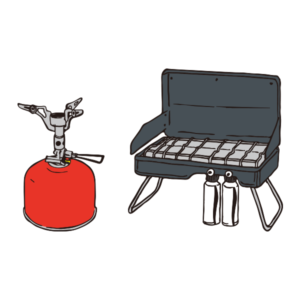 |  | 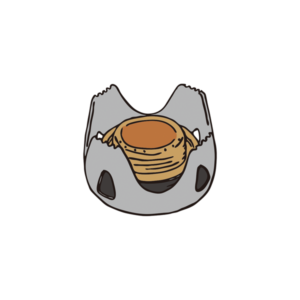 | 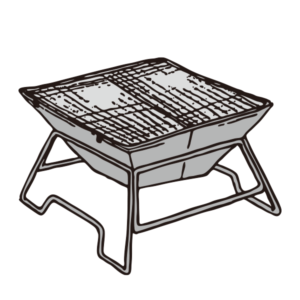 |
| Strength |
|
|
|
|
| weakness |
|
|
|
|
| Recommended scenes | Camping, barbecues, mountain climbing, and more, from small to large groups to almost all-around | General mountain climbing at cold and high altitudes | Hiking and traveling where only boils water for one person is cooked | Camping and camping at waterfronts and designated areas |
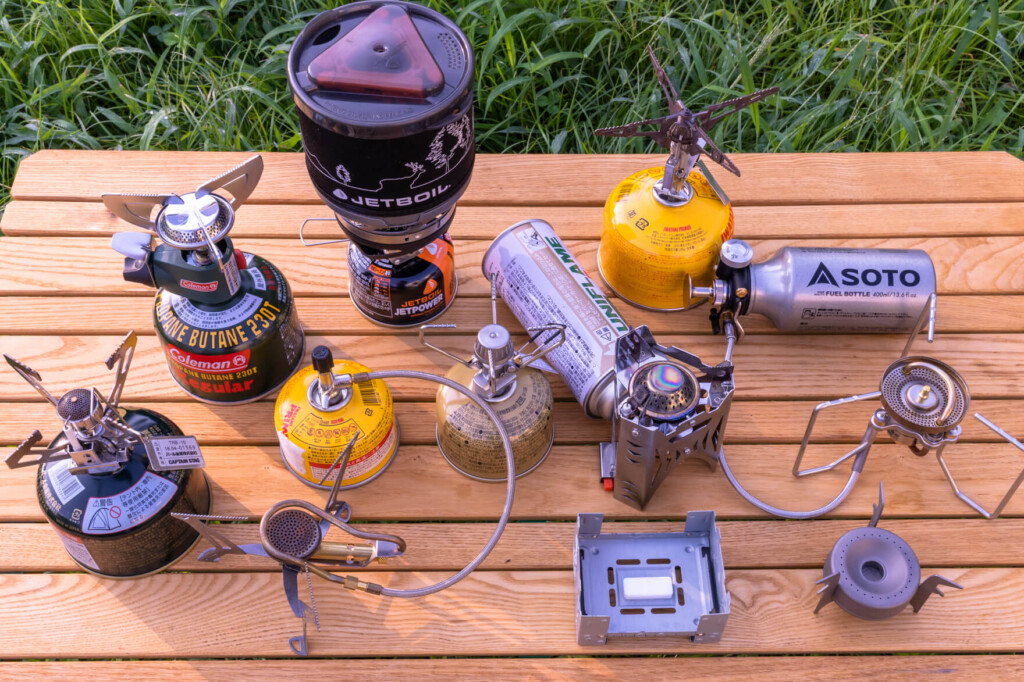
Basic parts of gas burners
① Windproof
The structures such as splitting the room where the flames are emitted into multiple units, and building small walls around the vents prevent the flames from disappearing due to wind. Some models do not have a windshield.
②Gotoku
The part where you place the cooker or pot on it.
③Burner head
Fire comes out of this part.
④ Ignition device (piezo igniter)
Pushing the button in will generate weak electricity and spark a spark. The heat of the spark will trigger the ignition of gas mixed with the air coming out of the head (it may not work well in some environments).
⑤Heat control knob
The part that controls the strength of the firepower. You can adjust the amount of gas released by turning the knob.
⑥ Gas cartridge (fuel can)
This container contains fuel, and contains liquid LP gas (liquefied petroleum gas).
⑦O-ring
Rubber parts that maintain airtightness between the connected gas cartridge and the burner (prevent gas leakage).
How gas burners burn
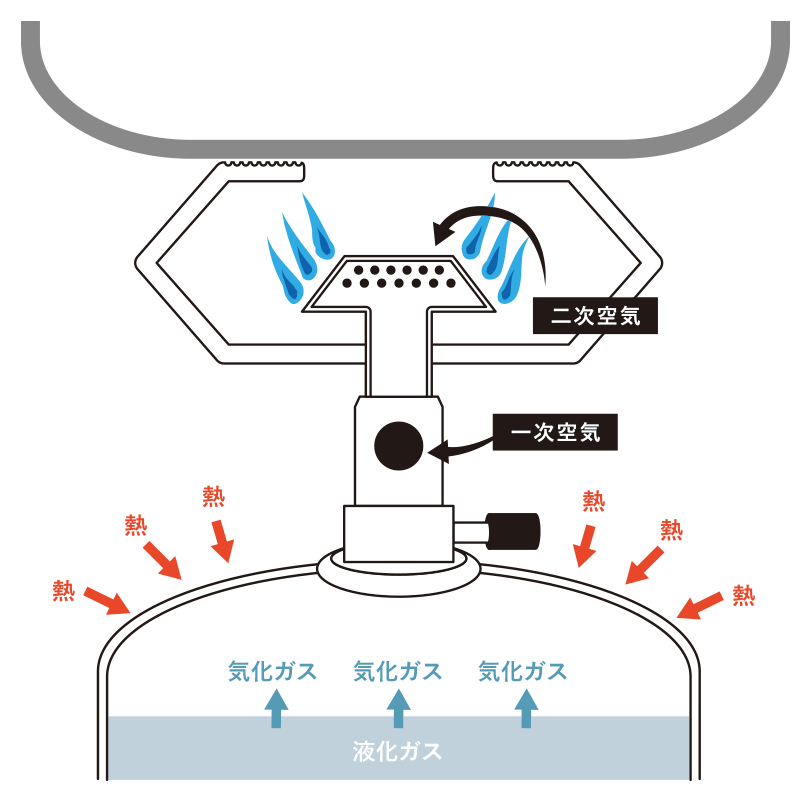 The gas cartridge is packed with liquefied gas (liquid gas) that has been liquefied by applying pressure and vaporized gas (gas-like gas) that has been vaporized by external heat. When you open the burner valve, vaporized gas will first erupt into the atmosphere.
The gas cartridge is packed with liquefied gas (liquid gas) that has been liquefied by applying pressure and vaporized gas (gas-like gas) that has been vaporized by external heat. When you open the burner valve, vaporized gas will first erupt into the atmosphere.
The gas blown out next mixes with the air (oxygen) taken in from the "primary air" part of the illustration, rising towards the burner head. This is because in order to completely burn the gas, it is not just a flammable gas, but it is necessary to mix it with oxygen.
The rising gas blows out of countless holes in the head, and is ignited by applying heat from an ignition device and lighter. The gas burns for the first time.
The gas burner will always take in large amounts of oxygen from around the flame while it is burning (the "secondary air" part). When the flame continues to take in the surrounding oxygen normally, the color turns beautiful blue and continues to burn, but if it cannot, the color changes to red and burns, simultaneously generating carbon monoxide, which is harmful to the body . For this reason, gas burners must always be used in large areas such as outdoors.
Once the gas is lit and the flame is hit, the vaporized gas sent out of the gas cartridge is constantly ignited, so the burner continues to burn as long as the gas is supplied. The heat control knob controls the gas supply and uses it safely.
Point 1: Choose the type of stove - How many people do you want to cook and what kind of cooking do you want?
When choosing the best outdoor gas burner, you should start by knowing that there are many different types of gas burners depending on the number of people (cooking size) and the purpose, and then considering which type is best for you.
Type 1) Direct-connected type - Highly versatile, suitable for your first item
This type of model will catch your eye when you first choose a model based on the price and variety of products. Not only is its firepower, but it also has a wide variety of options, from compact and light to relatively large models. Also, no matter which model you choose, it is very versatile, so there are few mistakes, and therefore it is a standard type that is very popular.
Type 2) Separate type - If you want to enjoy a large group or special cooking without stress -
Unlike the direct-connected type, this type is characterized by the fact that the burner and gas cartridge are separated. Though it is less weight and portability, it generally has a higher firepower. The bark is also larger and lower, making it easy to cook, and it does not wobble even when placing a large cooker, making it highly stable. Another attractive feature is that it is easy to protect against the wind around the fire.
If you think that weight and compactness are secondary and cooking is best that is less stressful, then the separate type is the best option.
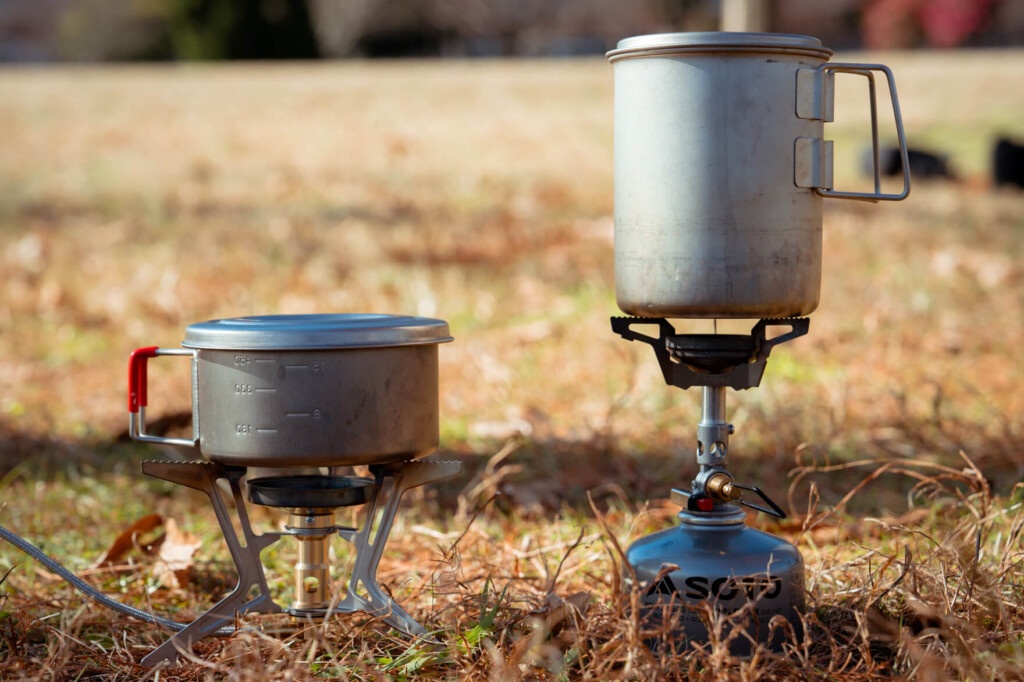
Type 3) Integrated type (direct connection/separate type) - If you want to eliminate waste of equipment and pursue efficiency
Over the past 10 years or so, the integrated type has become more common in the past type. By attaching heat absorbing fins to the bottom of the cooker and combining them with the gas burner's gut, it reduces heat loss and increases thermal efficiency to the maximum. Models with a set of cookies and sets are common.
Because heat is efficiently transferred with little heat, water can be boiled faster than usual, in other words, reducing fuel consumption. There are both direct and separate models, with direct-connected models mainly boiling water, while separate types can also be cooked. However, the drawback is that the entire system is slightly heavy and bulky, and because everything is set, there is no denying that there is inflexibility, such as lacking freedom.
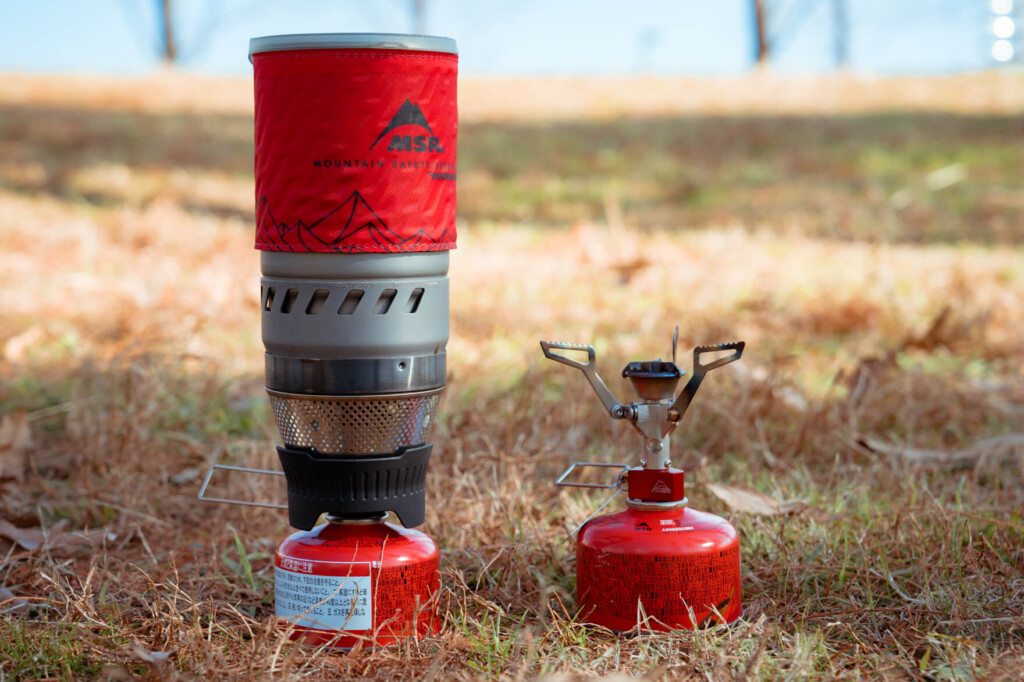
The characteristics of each type up to this point are summarized in the table below. Please understand that there may be some variation in characteristics depending on the model.
| kinds | Direct connection type | Separate type | Integrated |
|---|---|---|---|
| image | 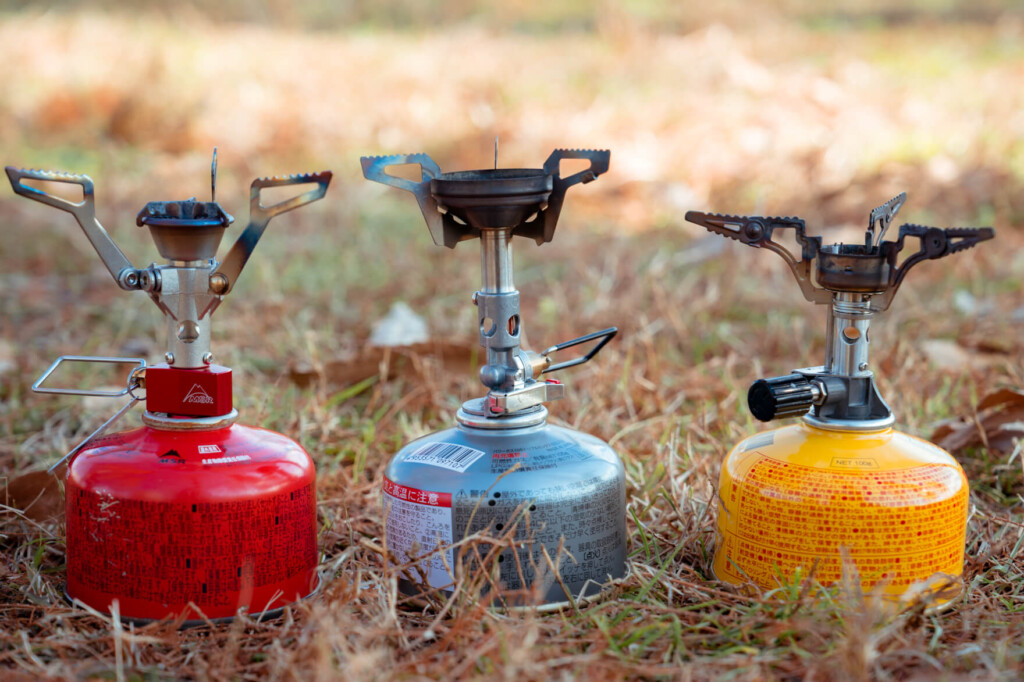 | 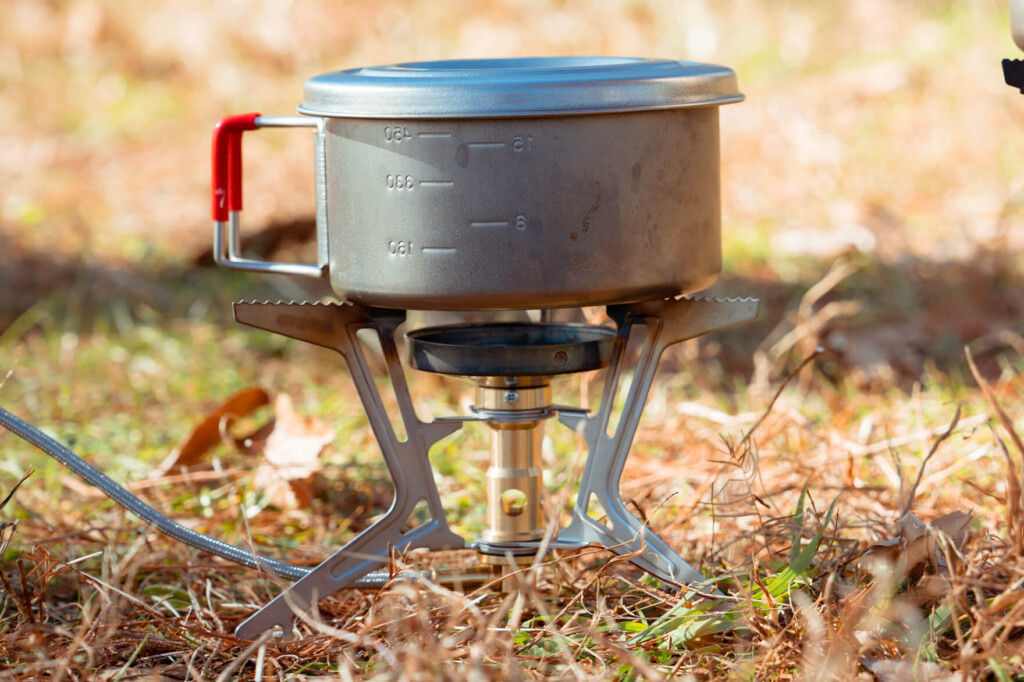 | 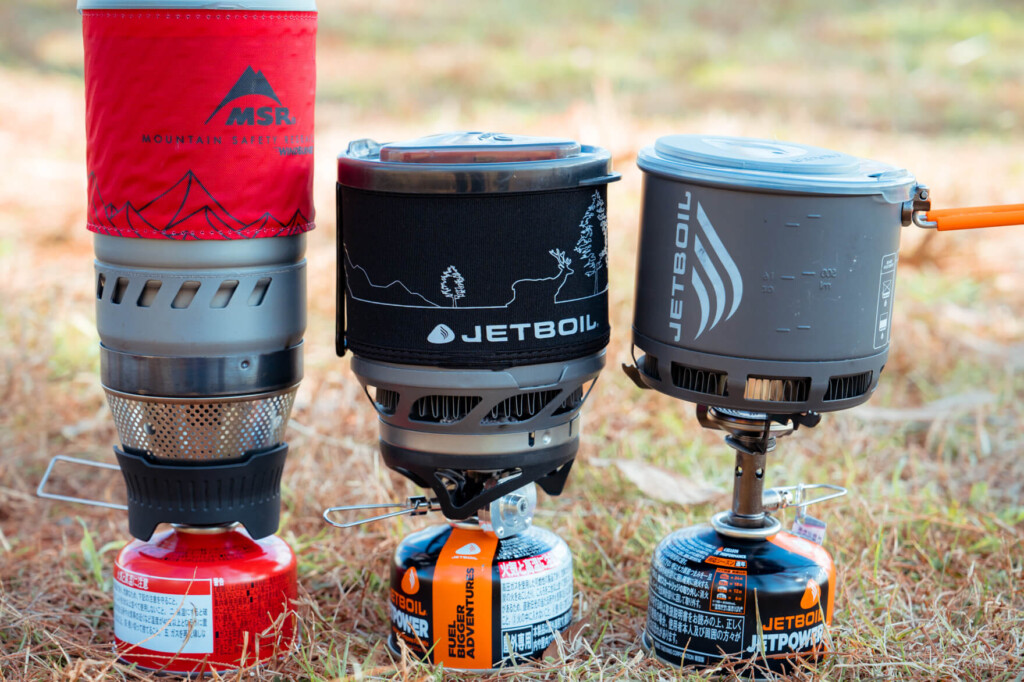 |
| Strong Points |
|
|
|
| Cons |
|
|
|
| Special uses | Easy cooking | Elaborate cooking | Boiling water (separate model can also be cooked) |
| Suitable activities | Wide range of outdoor activities | General outdoor activities with large groups | Lightweight hiking for one or small groups |
| Approximate number of people | One or more people | 2-3 or more people | 1-2 people |
Imagine how many people you want to cook and what kind of cooking you want?
To find a model that's just right for you, first imagine how many people you want to use, just to roughly. Think of the expected number of users, whether they are fully used for solo hiking, or if they are 1-2 people, 3 or more, or 6 or more people.
Next, we will consider the number of people and consider the question of how complicated the cooking is.
- Should I simply boil water?
- Do you want to cook well while adjusting the heat slightly?
For example, if you are using it to drink coffee alone or eat a freeze-dried meal, a direct-connected compact model or integrated model would be best. If you want to cook in groups of three or more people, a burner with a large barley or a separate type is convenient.
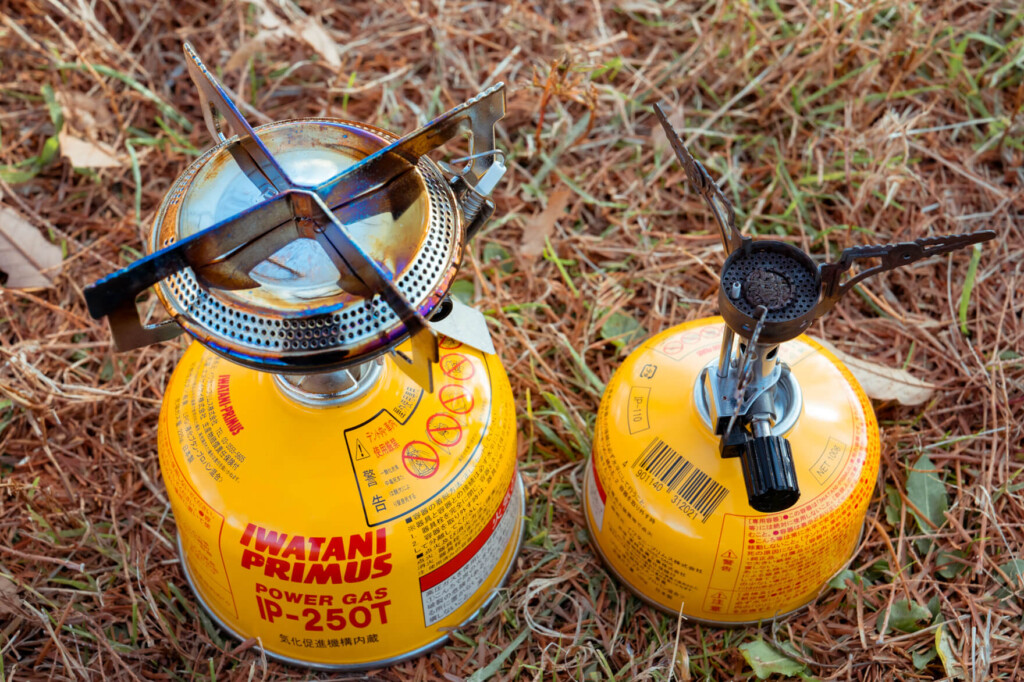
Point 2: Choose a higher performance and fuel economy model
Must be high output
In outdoor activities where every minute and every second is much more important than everyday life, it's better to even boil water quickly. Whether or not to boil water faster is one of the most important points to consider when choosing a smart burner.
So what should you check for that? Of course, possible to produce greater flames (fire power) . A burner with high heat should allow you to boil water in a short amount of time with a strong flame. The strength of this heat power is the value displayed as heating amount " or " output Of course, burners with large output tend to have larger sizes, so you need to consider the trade-off between heat power and weight and size, but in any case, it's best to have as much heat power as possible.
High thermal efficiency
However, the story is not over here yet. In order to actually boil water quickly, the quality and the "thermal efficiency" of simply transmitting the output as heat without waste will also affect the quality. No matter how many flames are emitted from the burner, if the heat from the flames had been dissipated to the surrounding area before it was transmitted to the cooker, the firepower would be wasted.
Thermal efficiency cannot be that different if it is the same type (for example, the same direct-connected type), but there is a big difference between direct-connected type and integrated type. The integrated burner features an integrated structure with a dedicated cooker with heat absorbing fins that does not waste heat, and the high thermal efficiency allows for faster water boiling than ever before, causing a whirlwind in the mountaineering world. It is because of this high thermal efficiency that integrated burners have a smaller output compared to direct-connected burners, but they actually outperform the speed of boiling water.
This high thermal efficiency, which means that you can boil water quickly even if the output is small, contributes to the ability to boil water with less fuel, which means that you can good fuel efficiency = essentially reduce the weight of your luggage." From a practical perspective, this thermal efficiency is just as important as the rate at which the burner boils water. Even if you could boil water in just a minute, if the gas cartridge was empty in no time, the burner would not be a "useful" burner for hikers and climbers. Weight savings are a critical issue, especially for through-hikers walking on long trails, so efficiency can have a major impact when considering it (by the way, this fuel economy can be estimated based on numbers such as "gas consumption" and "time of use" which represent the time the burner consumes a certain amount of fuel).
Furthermore, this high-heat efficiency (integrated) type has undergone remarkable evolution in recent years, and from the fact that it was simply boiling water, it has been increasing the number of models and additional options that have significantly improved usability, such as complex cooking and cooking for large groups. MSR Windburner launched an adapter that converts existing models into separate models, as well as skillets and large pot options that allow for high heat efficiency to cook. In any case, the integrated type will definitely become a major mainstream along with the direct-connected type (which aims to be extremely lightweight), and we will be looking forward to more new products in the future.
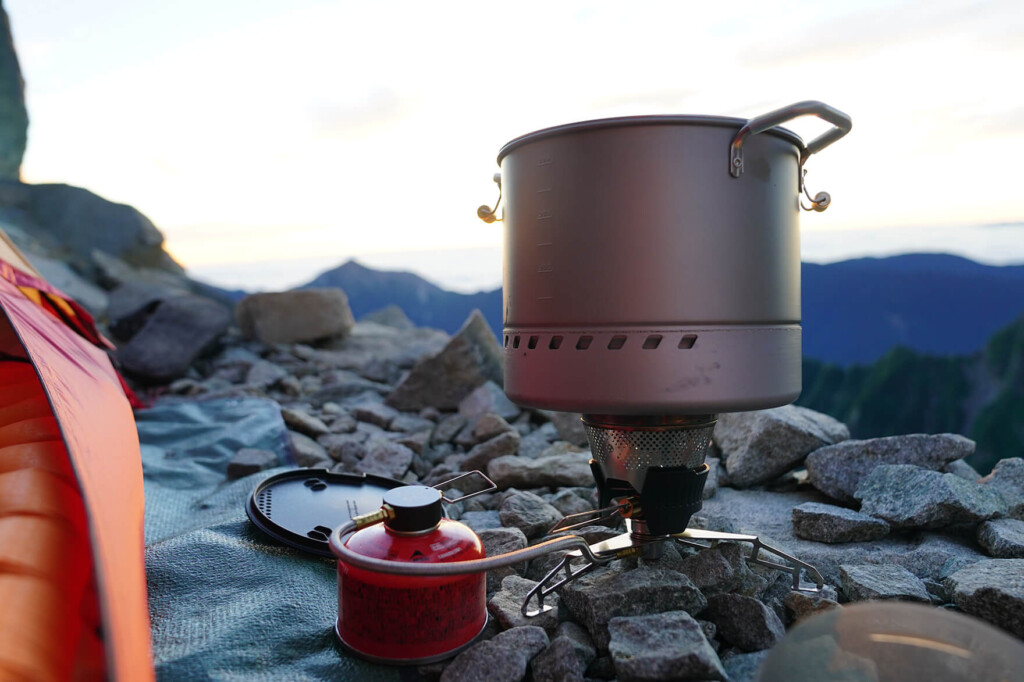
Point 3: Choose one with more wind resistance and durability at high altitudes or low temperatures
The boiling time explained in point 2 was of course measured in a well-conditioned laboratory. Such situations are rare in actual fields, and usually wind blowing, cold and high places, so even if you just pursue the boiling speed in tests, you won't be able to choose the ideal burner. The next thing to consider is the stability of performance under adverse conditions.
Wind resistance
First of all, gas burners are generally sensitive to wind, so strong winds can have a major impact on the burner's performance (boiling time and fuel efficiency). To get the best performance in stormy weather, it is important to choose a model that is wind-resistant, whether it is an integrated type or a direct-connected type. Among integrated burners, MSR wind burners, which are particularly resistant to poor conditions, have been confirmed to boil faster than jet boils in windy environments, despite losing the boiling speed in comparison to the same integrated type Jet Boil Minimo (according to this site).
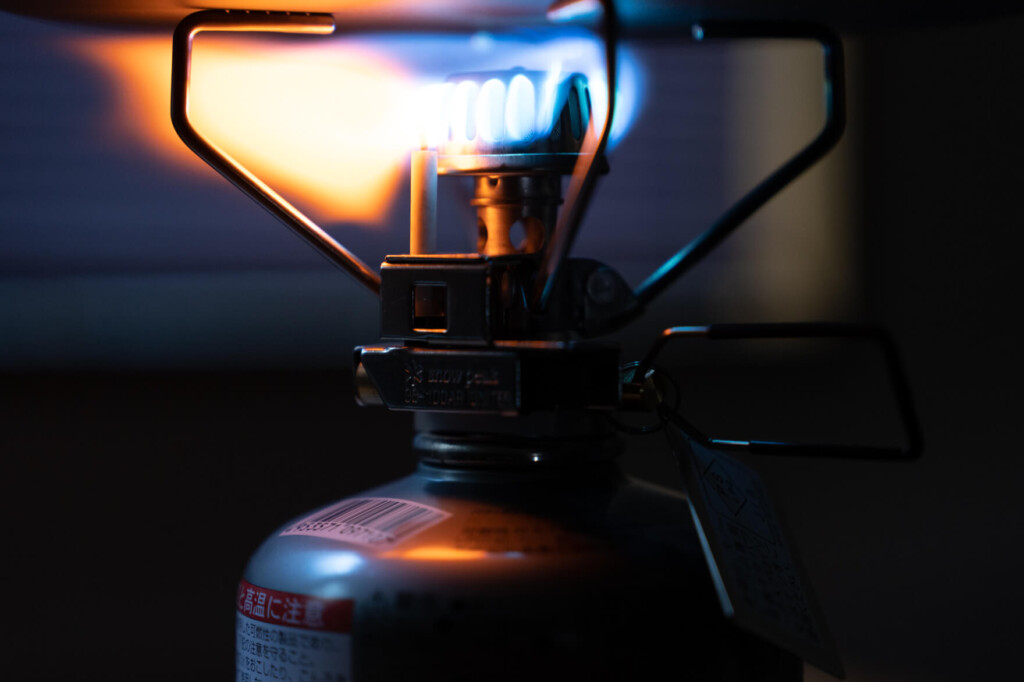
When using a direct-connected burner, usually you should choose a location that is less susceptible to wind and install it. Some manufacturers can use so-called "windshields," but basically, the fuel canister itself will be overheated by surrounding the burner, so it is best not to use it, so in any case, you need to be very careful when using it.
Strength in cold and high altitudes
Gas burners are also not very good at cold and high places (compared to liquid fuel burners).
White gasoline and other liquid fuels generally work fine even in cold places. On the other hand, in the case of gas burners, the pressure inside the cartridge often decreases in cold regions and high places, resulting in a weakening of the momentum (= heat power) of the gas erupted. Therefore, if you are planning to use a gas burner in this situation, it is effective to choose a model with a pressure control function called a "microregulator" or a model (although there are few types) that can be used by flipping a gas cartridge called a "liquid-out type." Without this mechanism, a separate use of a cartridge for cold regions with high gas vaporization efficiency can be used even in extremely cold regions to prevent the heat loss, but cartridges for cold regions are difficult to use in warmer seasons, which reduces versatility, so it is recommended that the burner itself be suitable for cold regions and high places as much as possible.
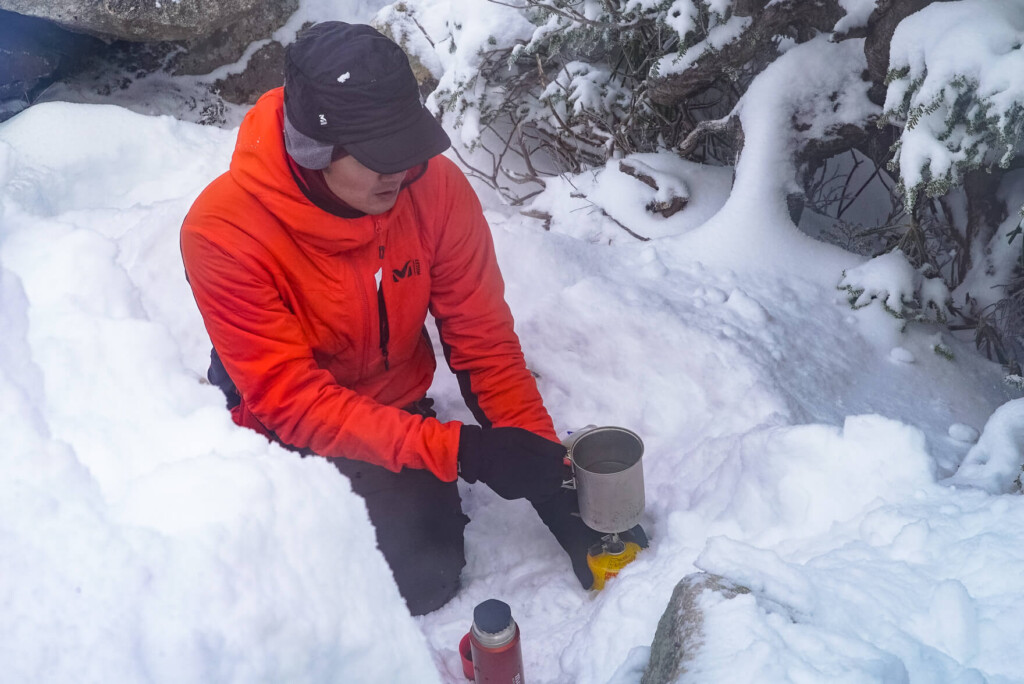
In any case, the heat can tend to decrease in cold seasons, so it is essential to keep the fuel warm in your jacket pocket or sleeping bag, or use it while using a booster sold separately while still warming.
Point 4: Choose something that's heavy and portable
Like most mountain tools, weight and storage size for burners are important considerations. However, when comparing it to big tents and sleeping bags, obtaining the lightest burner does not have much impact on the overall weight of your luggage, so there may not be any need to take it that seriously.
However, the difficult part when choosing a gas burner is that weight and size are not just the problem of the burner itself, but the choice of burner affects the entire cooking set, such as other fuels and cookers. If they accumulate as dust, it could turn into mountains.
At first glance, this integrated type burner is not too lightweight and compact, but on long trails that last for days, you will inevitably need to carry many gas cartridges. In this case, if you can reduce the number of cartridges from two to one, you can instantly reduce the weight of a can at once, so the difference cannot be ridiculous (in this regard, liquid fuel can be advantageous in that it can carry around and finely adjust the amount of fuel). So, the fuel-efficient integrated type is a bit more exaggerated for weekend hikes and may not be as heavy as the standalone model, but it could ultimately have an advantage on long trails for a few days. This is probably why jetboil is popular among North American through-hikers.
In summary, if you are aiming to reduce the weight of your burners, it is a wise choice to "first prioritize that it has the necessary functions rather than weight and size," and then consider "to make the overall cooking system lighter and more compact," including fuel.
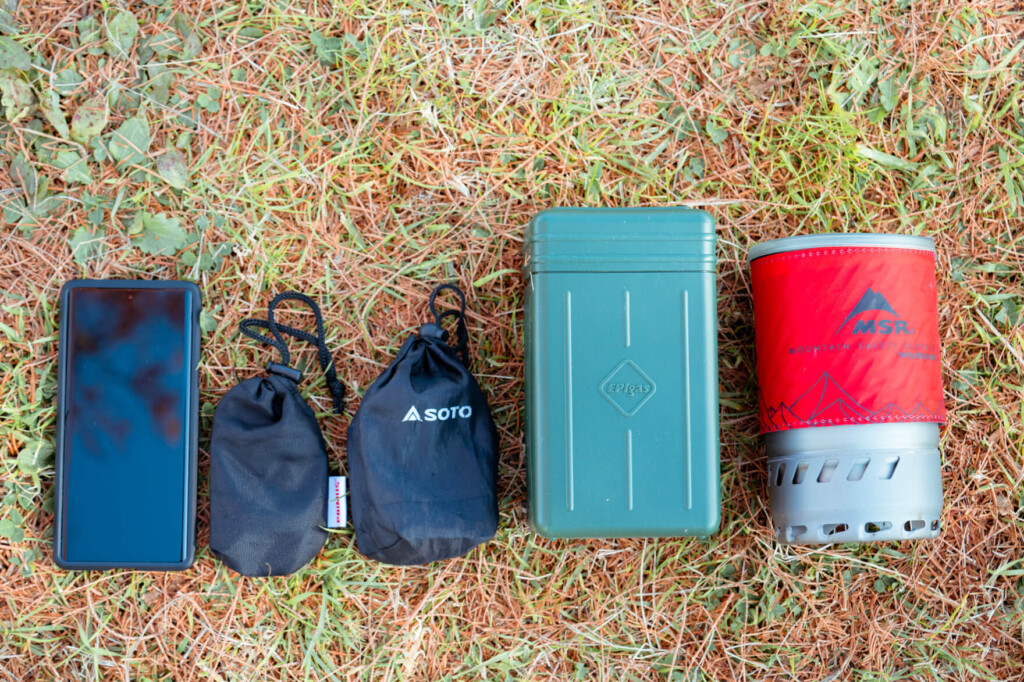
Point 5: Other detailed features
Ease of cooking (delicacy of heat control knob, wide burner head)
Although integrated gas burners that focus on efficiency are good at burning at the highest power output, they are often not good at keeping the heat at the very least. A rich meal will most certainly lead to vitality in the field and will undoubtedly make your journey more fulfilling. In that sense, it is never a waste to check whether the heat control knob that can be used to cook stews or cook rice is delicate Furthermore, if you want to make delicate cooking more successful, the wider burner head is also more suitable for cooking, as it can provide even more heat power throughout the shallow cooker. However, as the head grows larger, the weight and size become larger, so it is a problem that there is a trade-off between reducing weight.
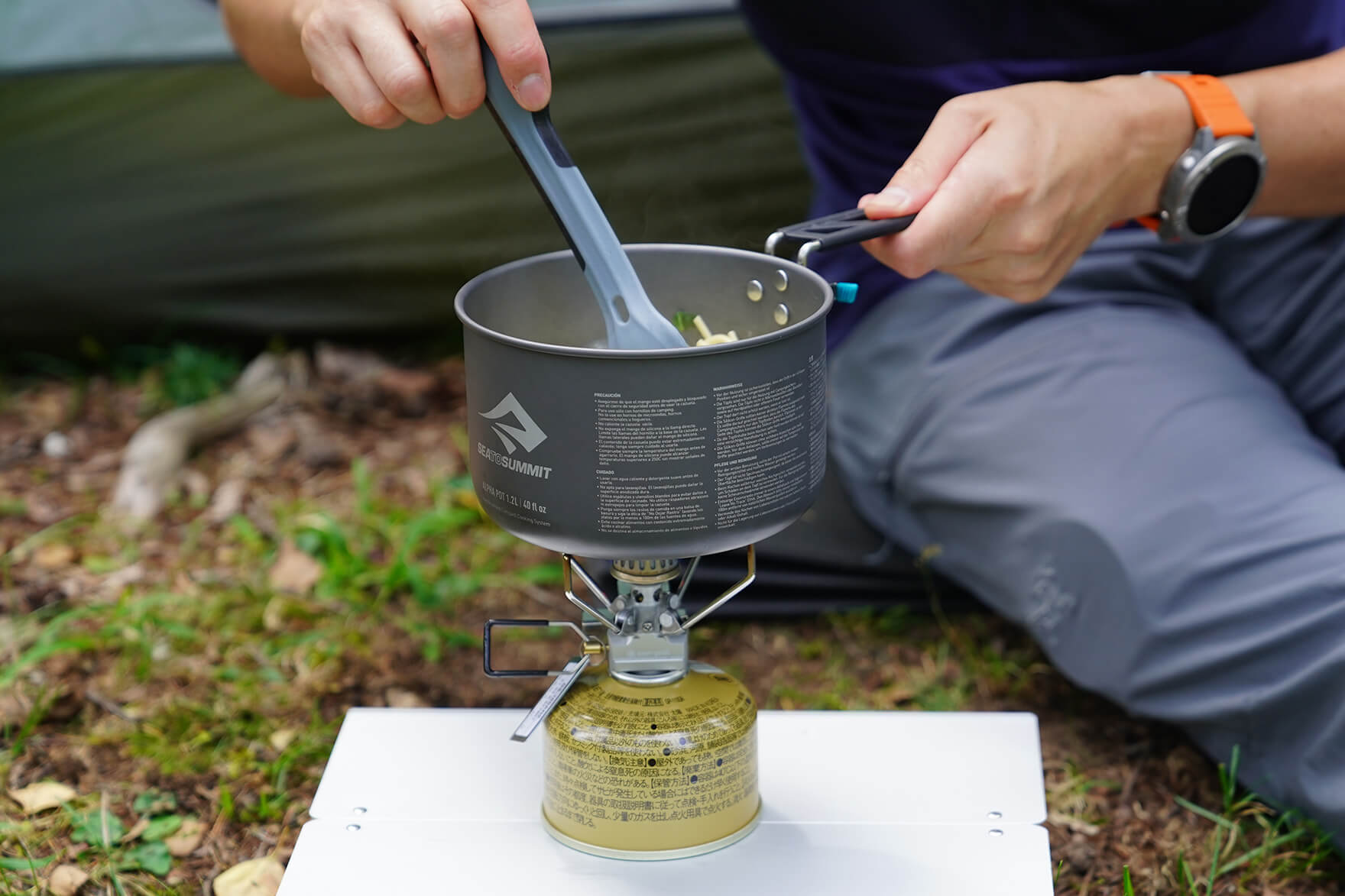
Ignition switch (piezo igniter)
Most burners come with an ignition switch called a "piezo igniter." This is something that can be found in electronic 100 yen lighters, where you press a button and fire a spark.
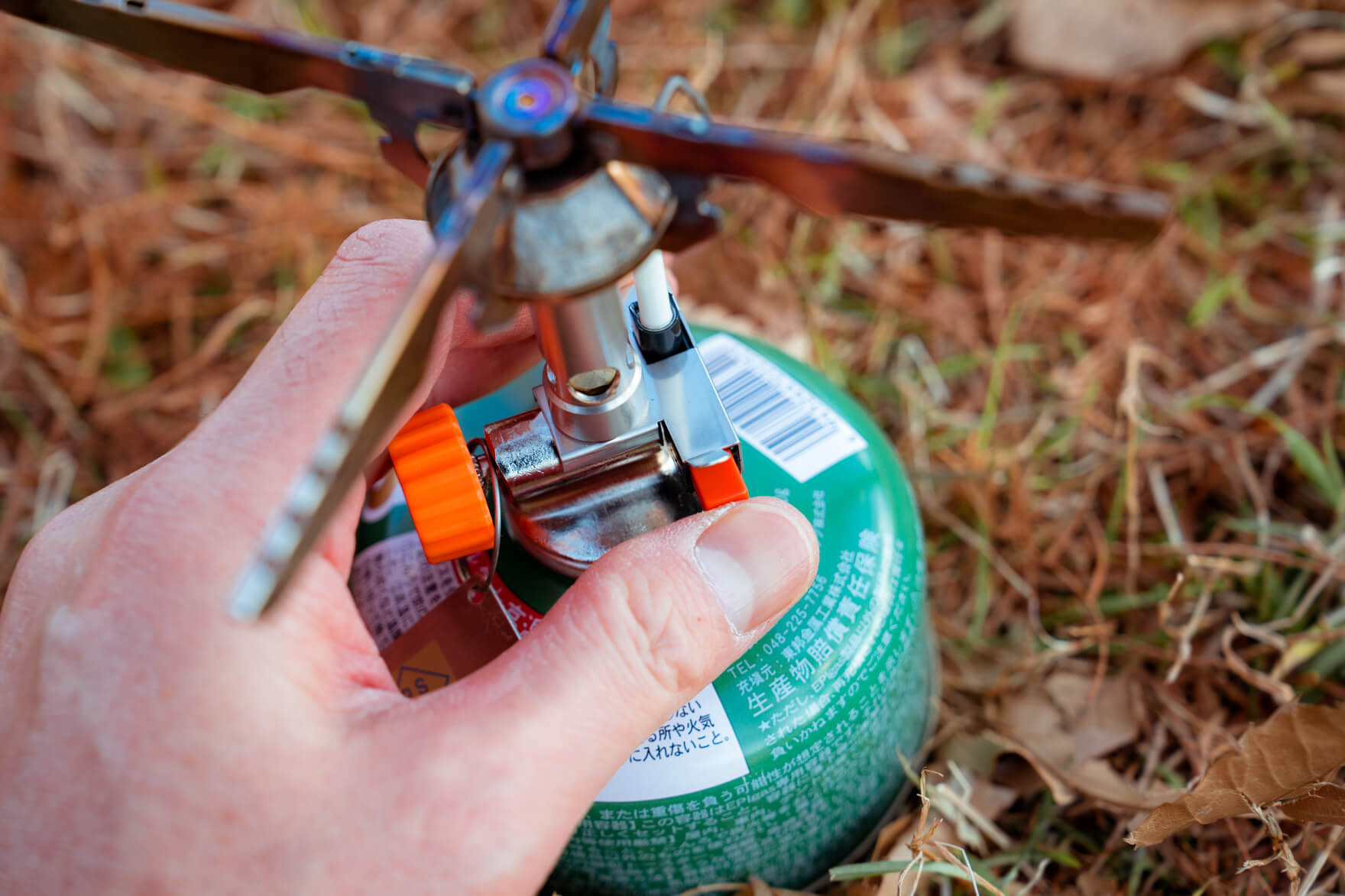
This handy tool sacrifices a bit of weight and size, but it's a useful feature for rough people like myself who often lose sight of the lighter. It saves time and effort, and is especially useful in windy situations where the fire of matches and lighters can be easily blown away.
However, the downside is that for some reason, there are situations where it suddenly doesn't work well (it may not work well at high altitudes, or it may deteriorate over time and stop functioning). In that case, you will need to ignite it with a lighter or something similar. In any case, it is essential to bring a spare match or lighter just in case, so igniters are not essential, and may actually be a nuisance for those who are pursuing weight reduction.
summary
I've written about a lot of things, but although there are minor differences between items, there are not much difference in the purpose of "heating". If you are unable to narrow down your needs and are unsure which one to choose, you should first a direct-connected standard model so you can handle it by yourself or in a group to some extent, so you'll be sure to be able to continue using it for a long time with confidence. It is not possible to meet all your needs with just one item, so don't think too deeply at first, and after some time, when your preferences, goals, and necessary functions change, you can search for a model that suits you again and buy more, and in the end you'll be able to get it all together without waste. Finally, it's important to buy a stove and use it correctly, not just buy it. We recommend that you thoroughly learn the instructions and precautions before using it incorrectly to avoid causing a serious accident.
Related Articles
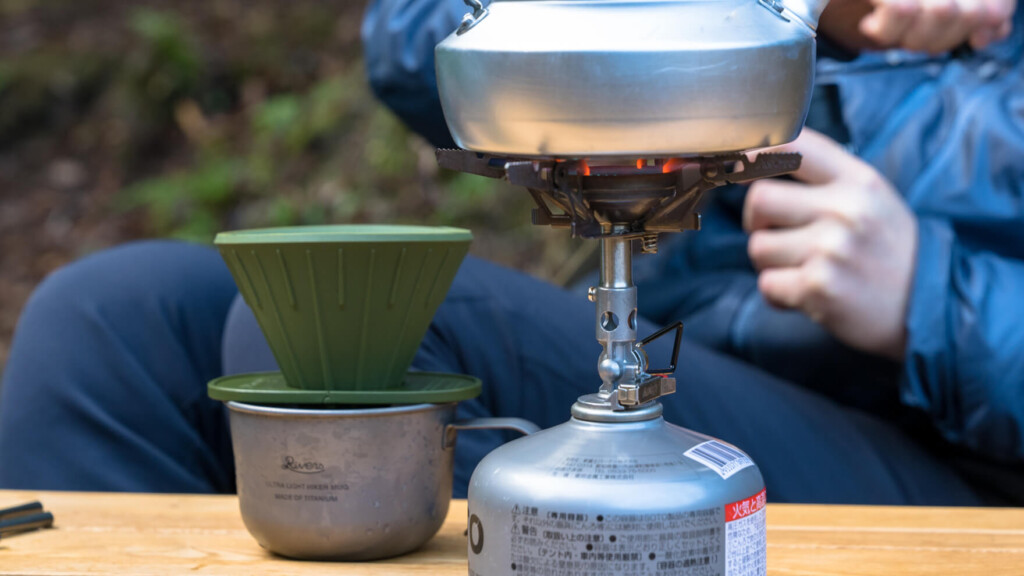
(Reference) A comparison table of main performance of the gas burners we have picked out this time
| evaluation | General | General | General | lightweight | lightweight | lightweight | group | group | group | group | group | All in one | All in one | All in one | Cospa | Cospa | Multi-fuel |
|---|---|---|---|---|---|---|---|---|---|---|---|---|---|---|---|---|---|
| item | SOTO SOD-310 Micro Regulator Stove Windmaster | PRIMUS P-153 153 Ultra Burner | EPI GAS REVO-3700 STOVE | MSR Pocket Rocket 2 | SnowPeak Giga Power Stove Material Auto | PRIMUS P-115 115 Femto Stove | PRIMUS P-155S Ultra Spider Stove II | SOTO SOD-331 Micro Regulator Stove FUSION Trek | PRIMUS P-136S Express Spider Stove II | EPI GAS APSA-III STOVE | PRIMUS IP-2243PA 2243 burner | JETBOIL Minimo | MSR Windburner Personal Stove System | JETBOIL stash | SOTO Amicus SOD-320 | PRIMUS P-TRS Essential Trail Stove | SOTO SOD-372 Stormbreaker |
| type | Direct connection type | Direct connection type | Direct connection type | Direct connection type | Direct connection type | Direct connection type | Separate type | Separate type | Separate type | Separate type | Direct connection type | Integrated | Integrated | Integrated | Direct connection type | Direct connection type | Separate type |
| Maximum output (kcal/h) | 2800 | 3600 | 4200 | 2143 | 2500 | 2100 | 3000 | 3000 | 2400 | 4000 | 3600 | 1404 | 1765 | 1134 | 2600 | 2100 | 3000 |
| Gas consumption (g/h)*1 | 153.3 | 245 | 308 | 227 | 210 | 170 | 210 | 177 | 155 | 280 | 250 | 120 | 142 | – | 153.3 | 170 | 287.5 |
| Weight (g)*2 | 67 | 116 | 111 | 73 | 90 | 57 | 167 | 182 | 195 | 425 | 253 | 440 | 465 | 200 | 81 | 113 | 448 |
| Gotoku size (Φ mm) | 100 | 148 | 152 | Approximately 110 | 106 | 120 | 168 | Approximately 150 | 156 | 160 | 120 | 120 | 105 | 110 | 106 | 110 | 170 |
| Ignition device | ◯ | ◯ | ◯ | ◯ | ◯ | ◯ | ◯ | ◯ | ◯ | ||||||||
| Boiling speed*3 | ★★★ | ★★★ | ★★★ | ★★ | ★ | ★ | ★★★ | ★★★ | ★★ | ★★★ | ★★★ | ★★★ | ★★★ | ★★ | ★★★ | ★★★ | ★★★ |
| Wind-resistant boiling speed*4 | ★★★ | ★★ | ★★ | ★★ | ★ | ★★★ | ★★★ | ★★ | ★★ | ★★ | ★★ | ★★★ | ★★★ | ★★ | ★★ | ★★ | ★★ |
*1 Calculated from the specifications table
*2 The integrated type is the total weight including the pot
*3 Measured the time it took to boil water at 300ml/15℃ to boil, and relative evaluation (fastest 67 seconds, slower 126 seconds)
*4 Measured the time it took to boil water at 300ml/15℃ to boil with wind speed of approximately 3m, and relative evaluation (approximately ★★★: boiling within 5 minutes, ★★: boiling water in 5 minutes, ★: warm water in 5 minutes)








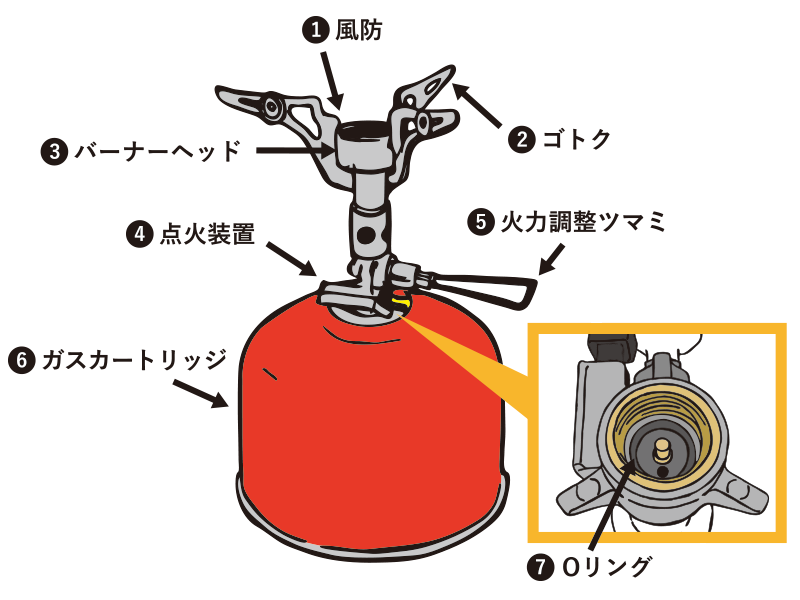
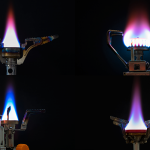 Comparison review: Comparing lightweight gas stoves (single burners) for mountain climbing [Ideal for beginners and solo hiking]
Comparison review: Comparing lightweight gas stoves (single burners) for mountain climbing [Ideal for beginners and solo hiking]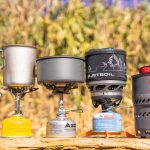 Comparison Review: Which gas stove should you choose for your mountaineering? I compared it
Comparison Review: Which gas stove should you choose for your mountaineering? I compared it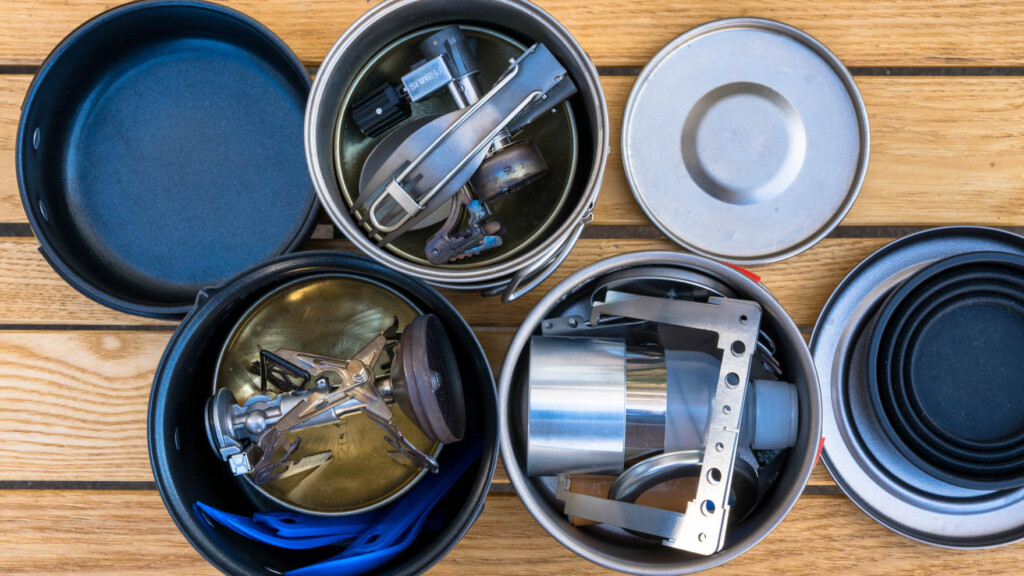 It's so much fun I forget about time. How to choose a stove, cooker, or cutlery to take to climb a tent [Practical Edition]
It's so much fun I forget about time. How to choose a stove, cooker, or cutlery to take to climb a tent [Practical Edition]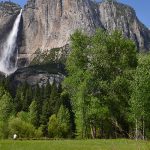 Best Outdoor Gear of 2014 by the US Outdoor Web Magazine Gear Institute
Best Outdoor Gear of 2014 by the US Outdoor Web Magazine Gear Institute